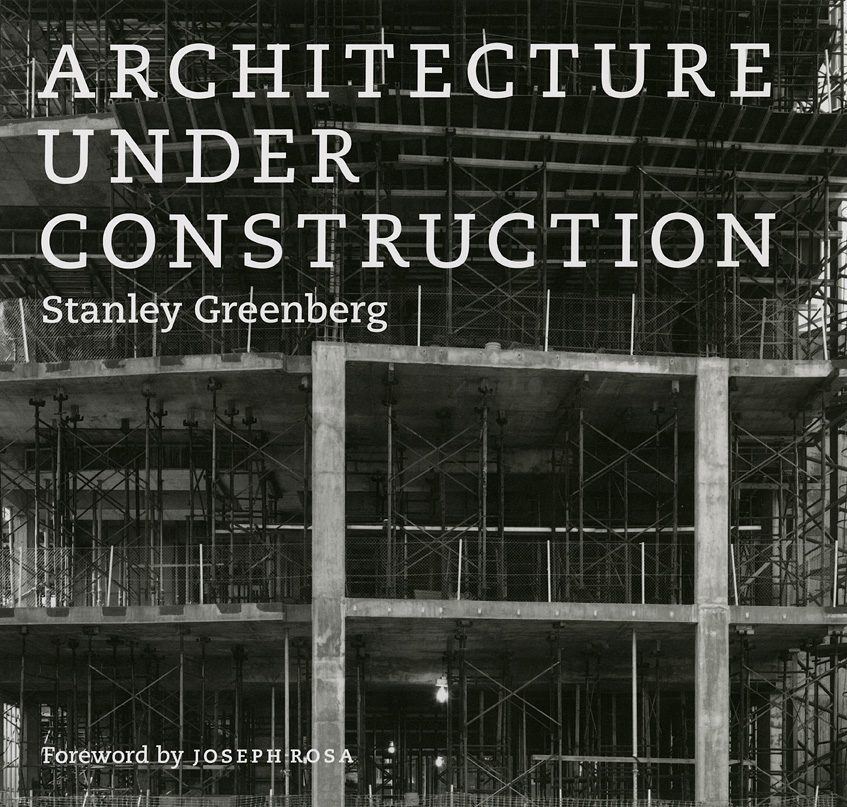A window into the architectural process

Contemporary architecture has undergone some radical transformations alongside advancements in technology that allow architects and engineers to design and construct buildings that were impossible just a few years ago. Viewing the finished works—works like Daniel Liebeskind’s Fredrick C. Hamilton building, or Frank Gehry’s Richard B. Fisher Center for the Performing Arts—inevitably evokes questions about their construction. How were they built, and how do some of these precariously tilted structures remain standing? In his recent book Architecture Under Construction—a collection of eighty black and white images of some of our most unusual new buildings in the process of their construction—Guggenheim Award-winning photographer Stanley Greenberg explores the complex mystery and beauty of buildings before they receive their obscuring skin. Stephen Longmire writes for a recent article in the Chicago Reader:
By arriving before anyone else—except the builders, who are nowhere to be seen—Greenberg is able to study the guts of these iconic constructions. It’s a matter of political principle for the New York-based photographer, whose two previous books, Invisible New York (1998) and Waterworks (2003), explore the seldom-seen infrastructure of his home town. “During the Bush years, everything was hidden,” he told me in a recent interview. “I wanted to look beneath the surface.”
Greenberg’s photographs are a testament to the architect’s craft, but they also show a world of vast computer-generated spaces for which the human body no longer appears to be a useful reference of scale. The buildings he explores resemble oversized architectural models, playthings for utopians and mad scientists. The roughness of the spaces reminds us that our civic life is always under construction, and more fragile than we may think. Consider what became of the boom that made these ambitious skeletons possible. “That was a moment in time,” Greenberg says. “I couldn’t make those pictures today.”
Through September 6th you can also see some of Greenberg’s original prints on display at in the new modern wing of the Art Institute, photographs of which, coincidentally, are also included in Greenberg’s book. For a primer on Greenberg’s work see this gallery of photographs from the book and read the complete Reader article online.